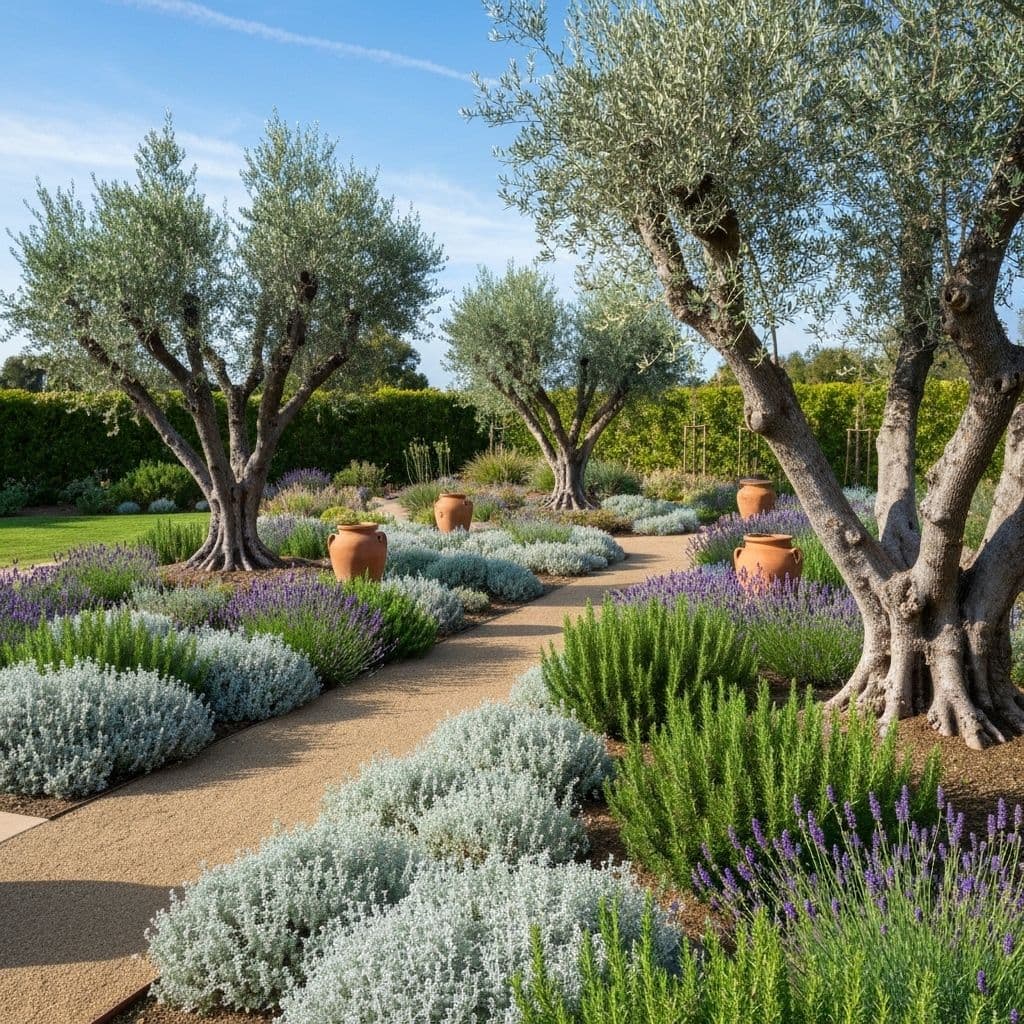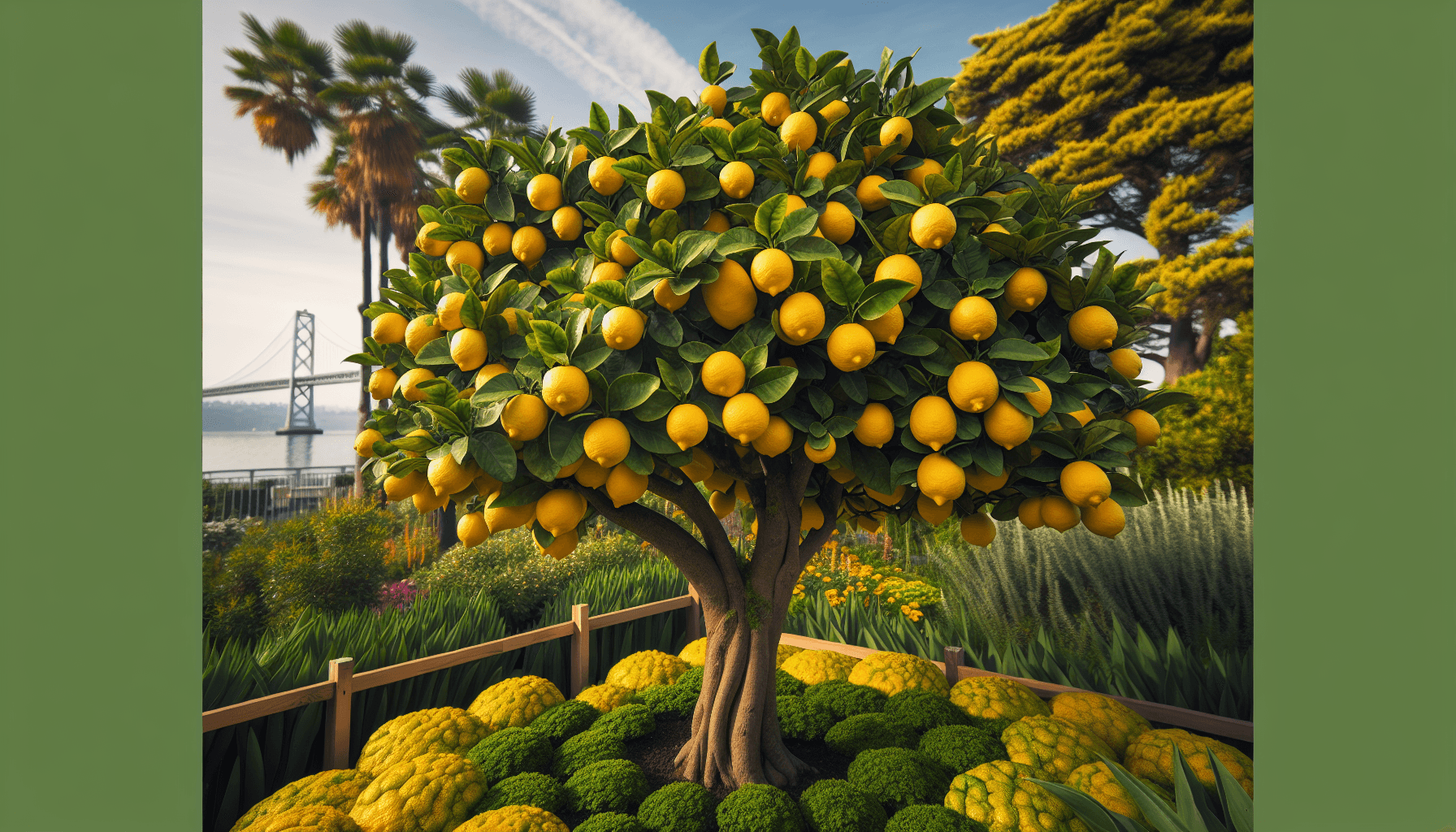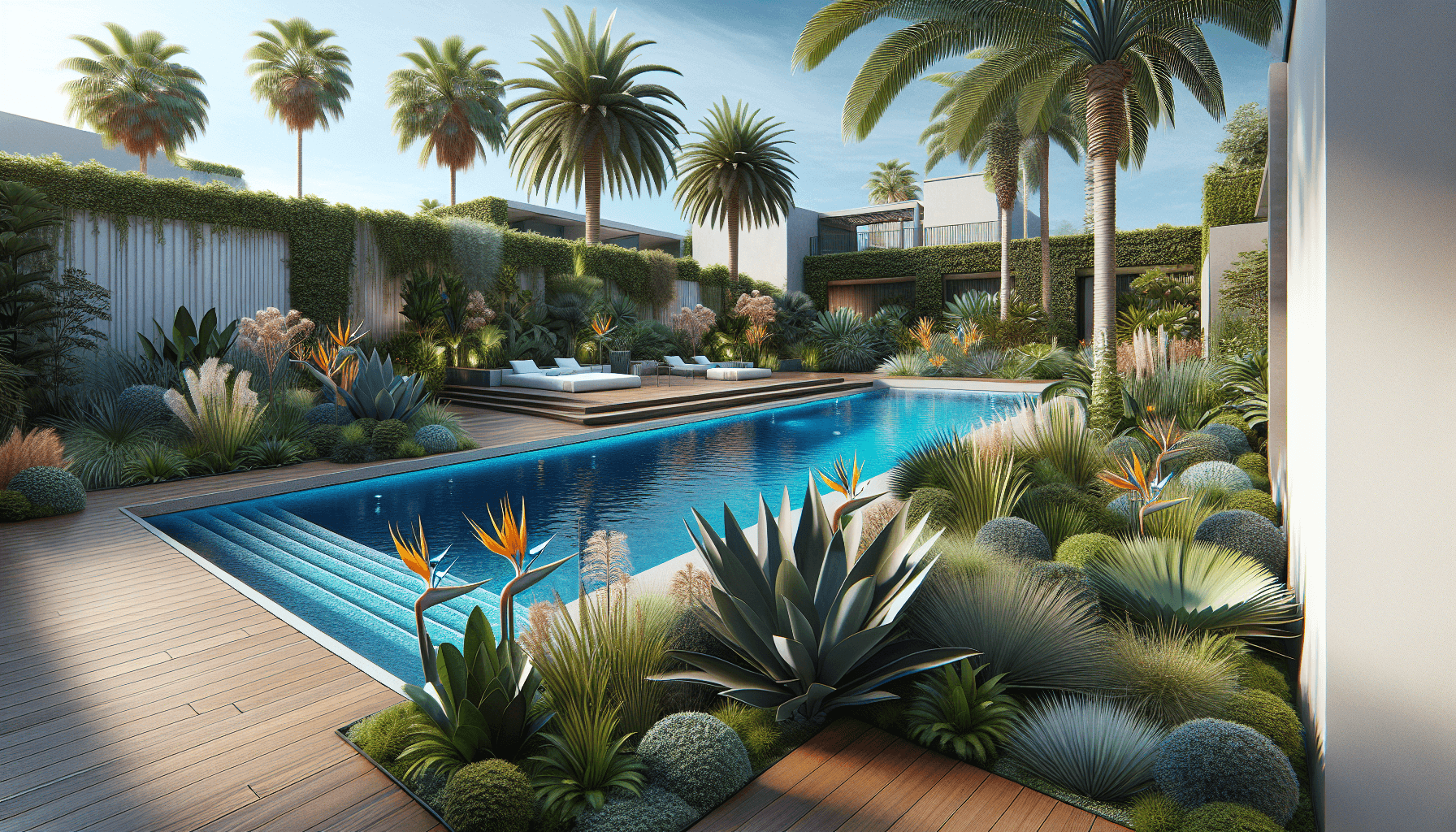California's Mediterranean climate—characterized by hot, dry summers and mild, wet winters—is nearly identical to the conditions found along the Mediterranean coast. This makes it the perfect environment for creating a stunning dry garden filled with drought-tolerant plants that not only survive but thrive with minimal water once established.
A Mediterranean dry garden offers year-round beauty, requires less maintenance than traditional lawns, and supports local ecosystems while conserving precious water resources. Let's explore how to design and plant your own Mediterranean oasis.
Why Mediterranean Plants Work in California
Plants native to Mediterranean climates have evolved remarkable adaptations to survive long, hot summers with little to no rainfall. These adaptations include:
- Deep root systems that access water far below the surface
- Small, silvery, or waxy leaves that reflect sunlight and reduce water loss
- Aromatic oils that protect against heat and deter herbivores
- Summer dormancy where plants naturally slow growth during the hottest months
Once established (typically after 1-2 years), most Mediterranean plants require little to no supplemental irrigation during California's dry season, making them ideal for water-conscious gardeners.
Plant Selection Guide
Foundation Trees
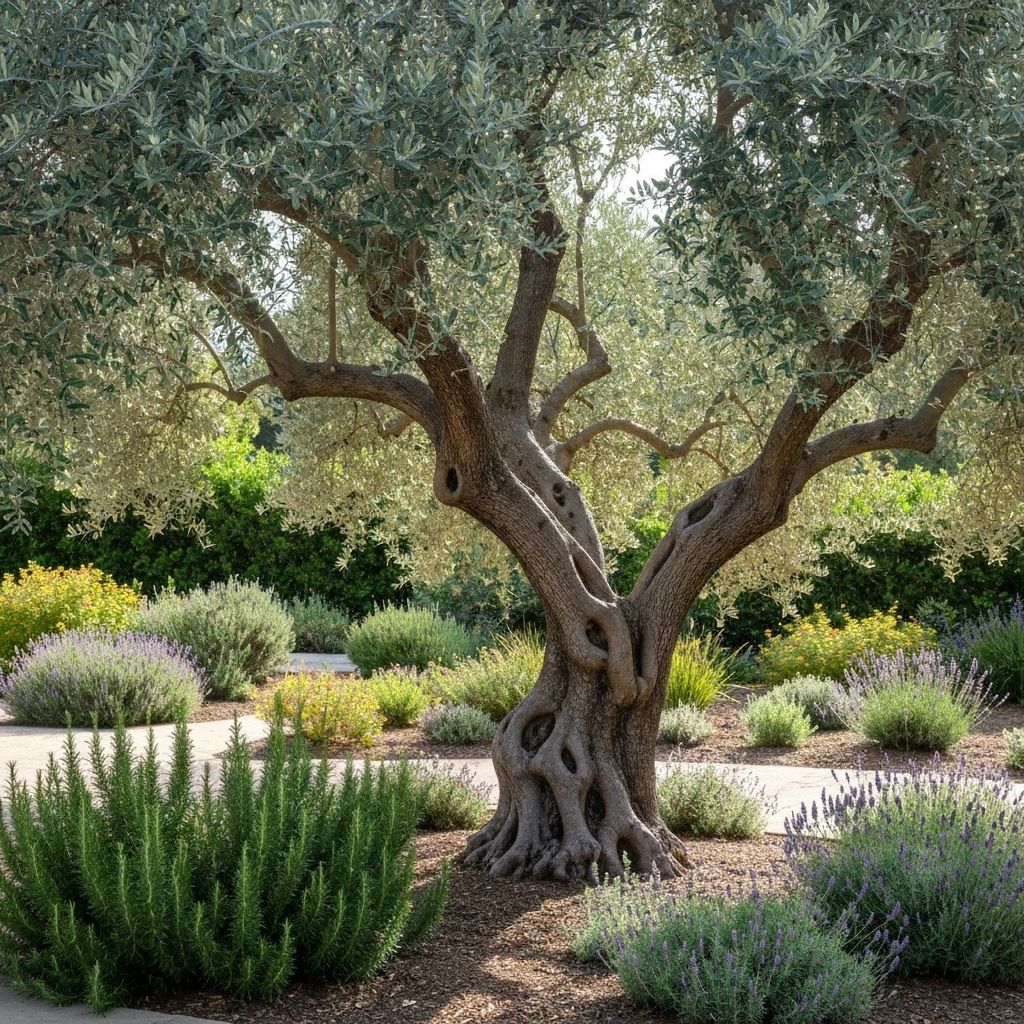
Mature olive tree providing structure and shade
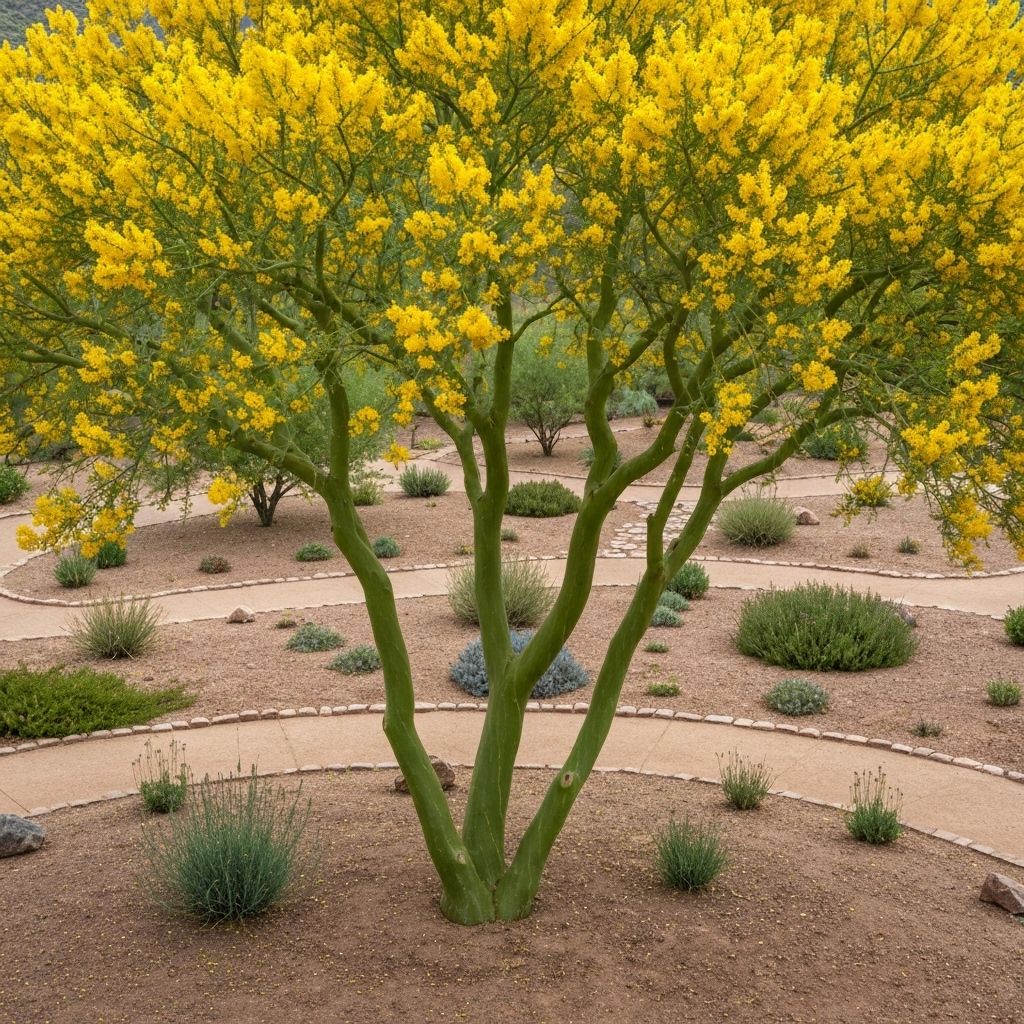
Palo Verde tree in spring bloom
Recommended Trees
Olive Trees (Olea europaea)
The quintessential Mediterranean tree. Varieties like 'Fruitless Swan Hill' and 'Wilsonii' provide silvery foliage and gnarled character without the mess of fruit. Extremely drought-tolerant once established.
Palo Verde (Parkinsonia species)
Desert native with brilliant green bark and clouds of yellow flowers in spring. Provides dappled shade perfect for understory plantings.
California Pepper Tree (Schinus molle)
Graceful weeping form with fine-textured foliage. Fast-growing and incredibly drought-tolerant.
Strawberry Tree (Arbutus unedo)
Multi-season interest with white flowers, red strawberry-like fruit, and attractive peeling bark. Compact varieties available for smaller spaces.
Shrubs: The Middle Layer
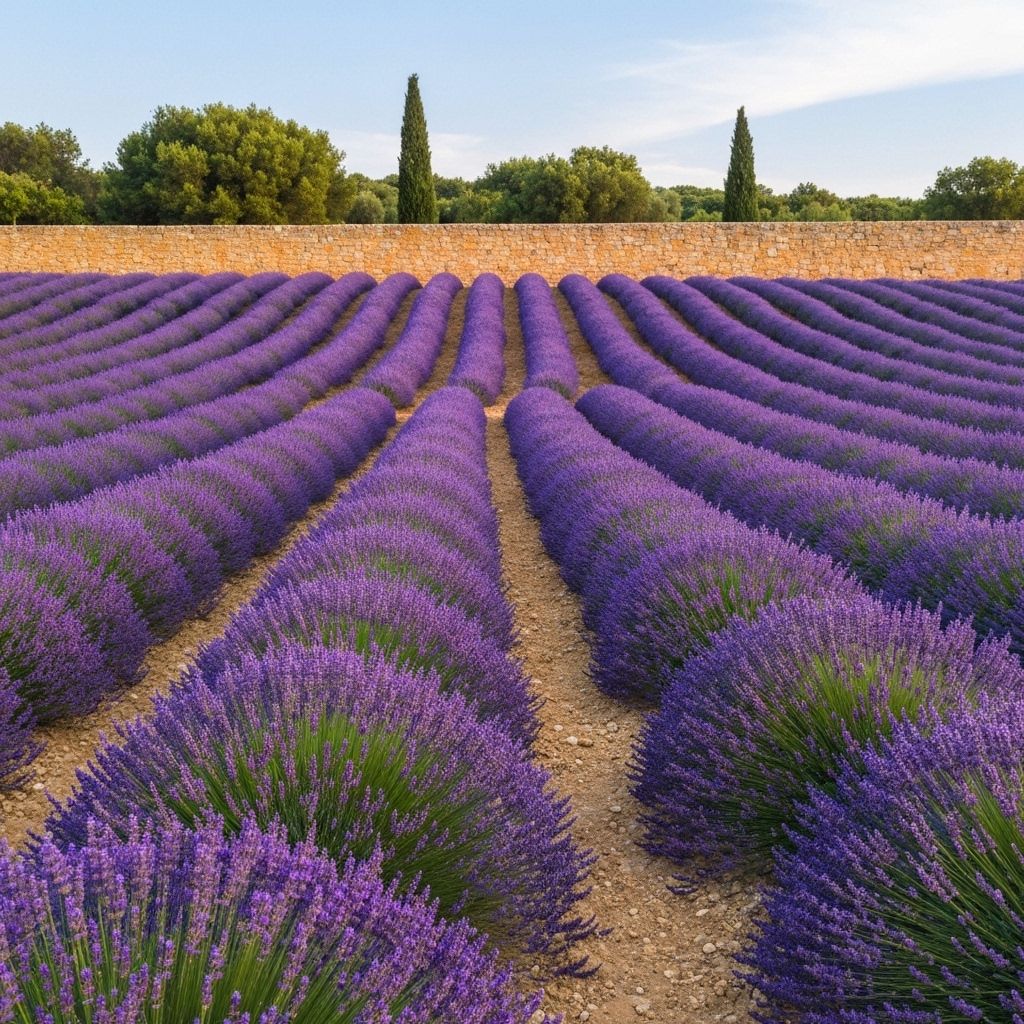
Lavender mass planting
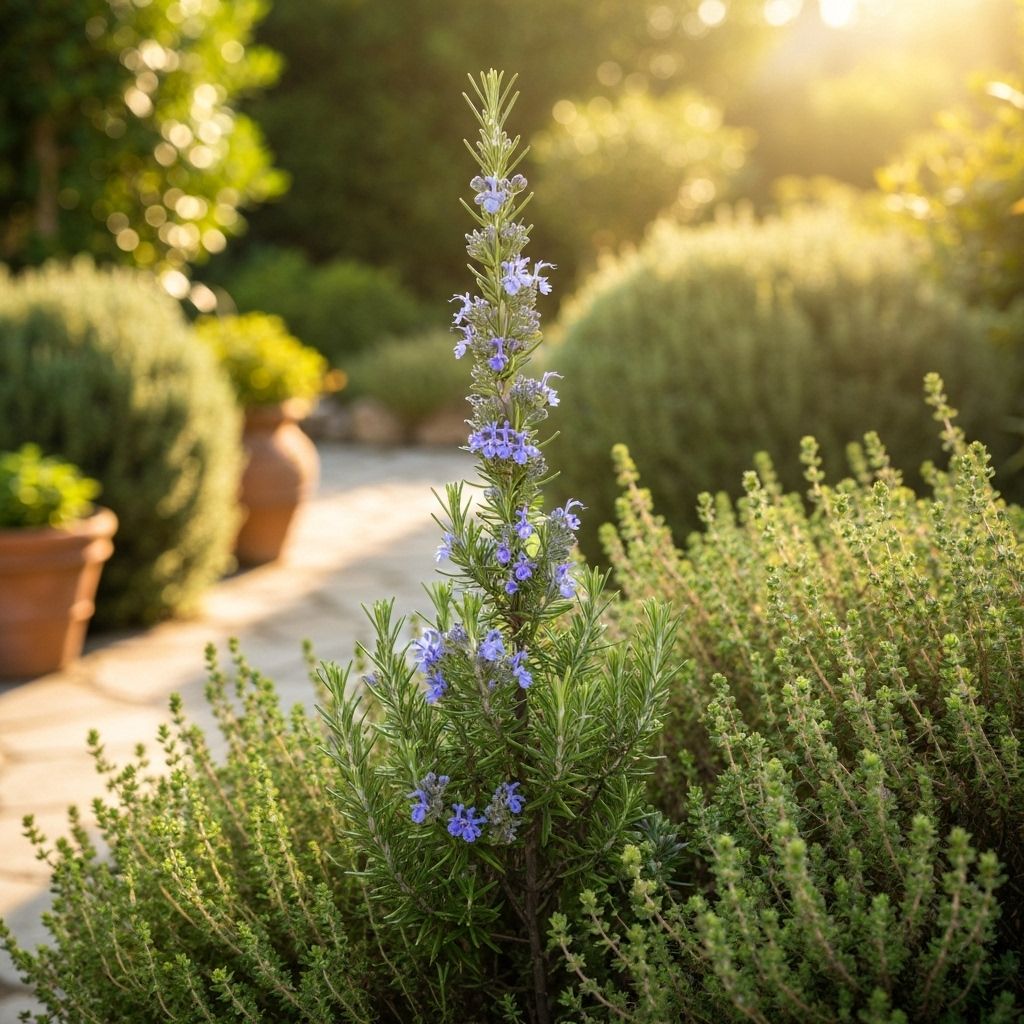
Upright rosemary hedge
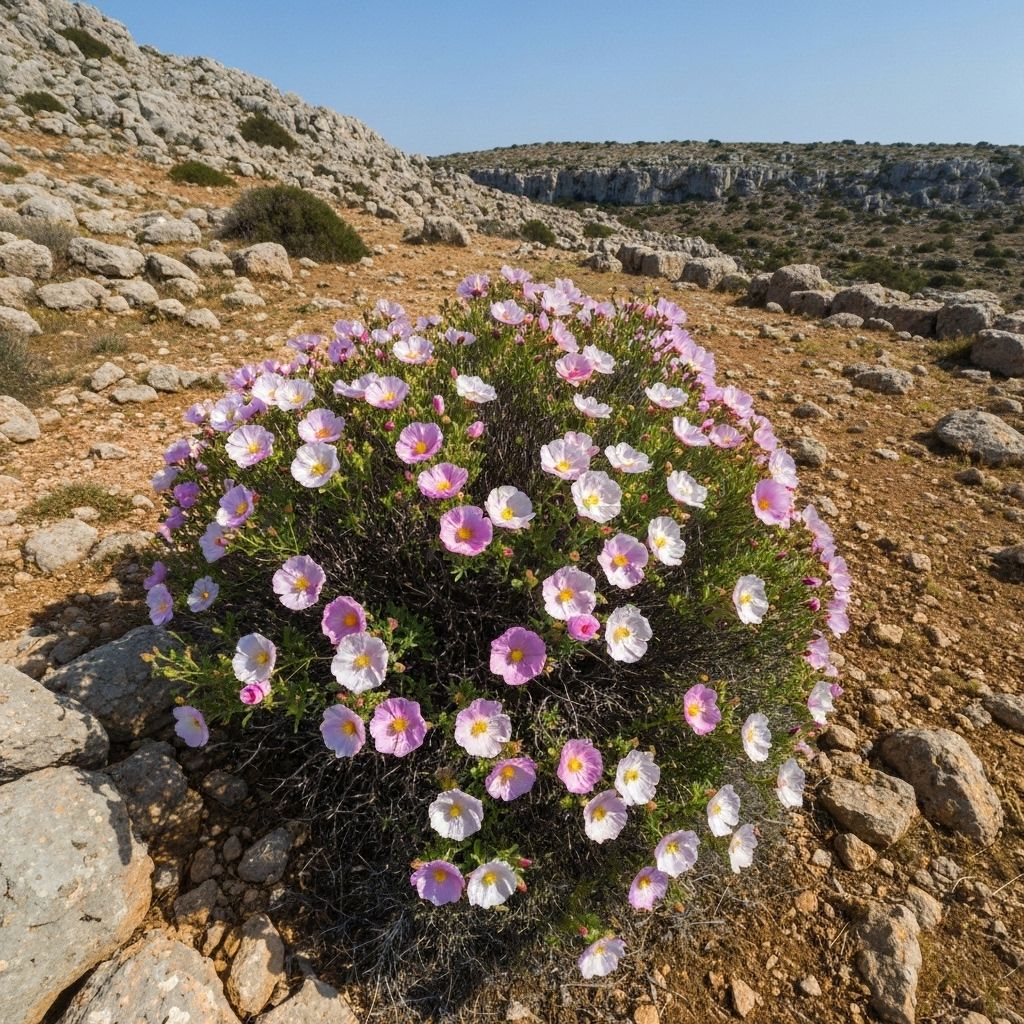
Rock rose in spring
Essential Shrubs
Lavender (Lavandula)
French, Spanish, and English varieties. Fragrant purple blooms attract pollinators.
Rosemary (Salvia rosmarinus)
Upright or trailing forms. Aromatic foliage and blue flowers year-round.
Rock Rose (Cistus)
Papery flowers in white, pink, or magenta. Extremely drought-tolerant.
Jerusalem Sage (Phlomis)
Whorls of yellow or purple flowers. Silvery foliage provides texture.
Manzanita (Arctostaphylos)
California native with stunning red bark and pink urn-shaped flowers.
Sage (Salvia)
Hundreds of varieties with flowers in every color. Hummingbird magnets.
Perennials & Accent Plants
Flowering Perennials
- Bearded Iris - Spring blooms in every color
- Agapanthus - Blue or white spherical flowers
- Gaura - Delicate pink or white butterfly-like blooms
- Yarrow (Achillea) - Flat-topped flowers, excellent for cutting
- Euphorbia - Chartreuse bracts provide long-lasting color
Architectural Plants
- New Zealand Flax (Phormium) - Bold sword-like leaves
- Yucca - Dramatic spikes and white flower stalks
- Agave - Sculptural rosettes in various sizes
- Aloe - Succulent leaves and vibrant flower spikes
- Kangaroo Paw (Anigozanthos) - Unique fuzzy flowers
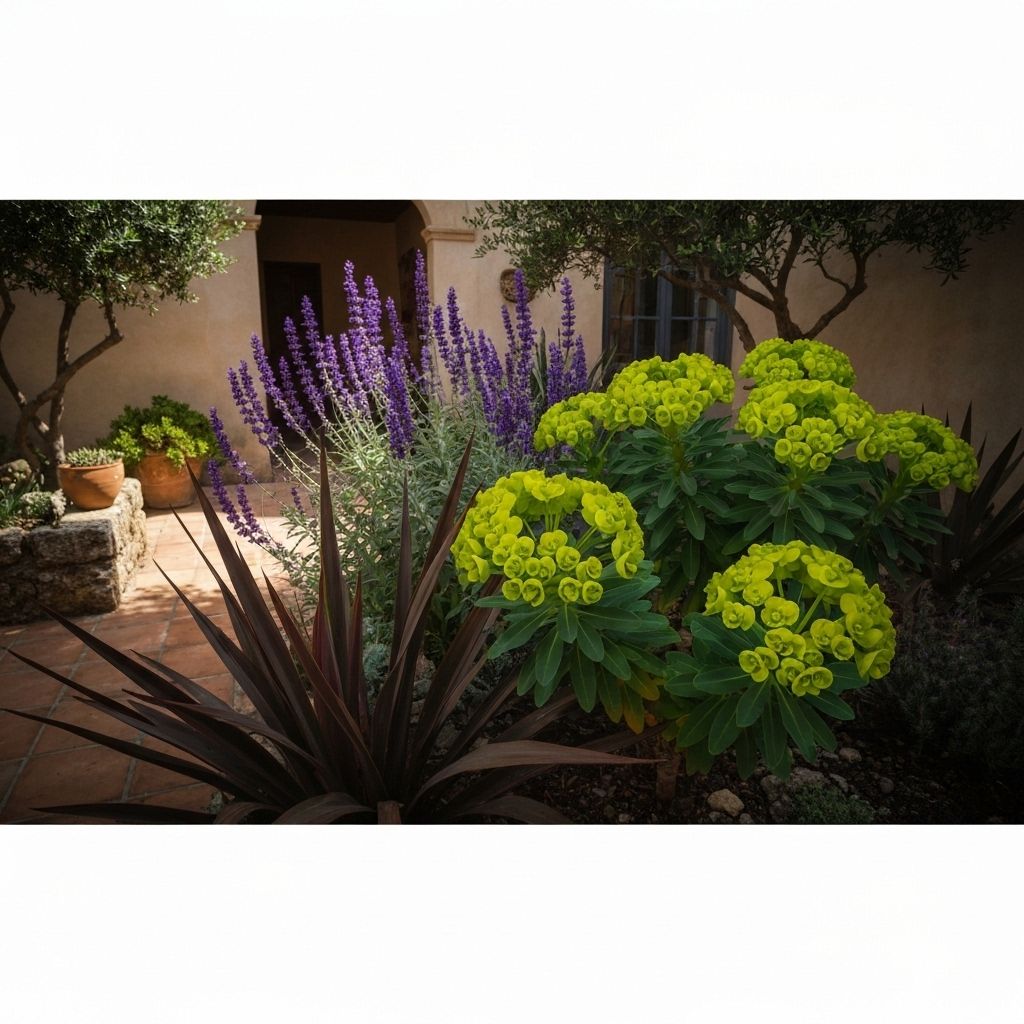
Architectural drama with euphorbia, Jerusalem sage, and New Zealand flax
Groundcovers
Groundcovers knit the garden together, suppress weeds, and provide visual continuity. Choose low-growing, spreading plants that can handle foot traffic or fill in between larger specimens.
Creeping Thyme
Fragrant, walkable, tiny flowers
Dymondia
Silver-green mat, yellow flowers
Trailing Rosemary
Cascades over walls beautifully
Sedum
Succulent foliage, many varieties
Woolly Thyme
Soft, fuzzy texture
Blue Star Creeper
Tiny blue flowers, lawn alternative
Design Principles
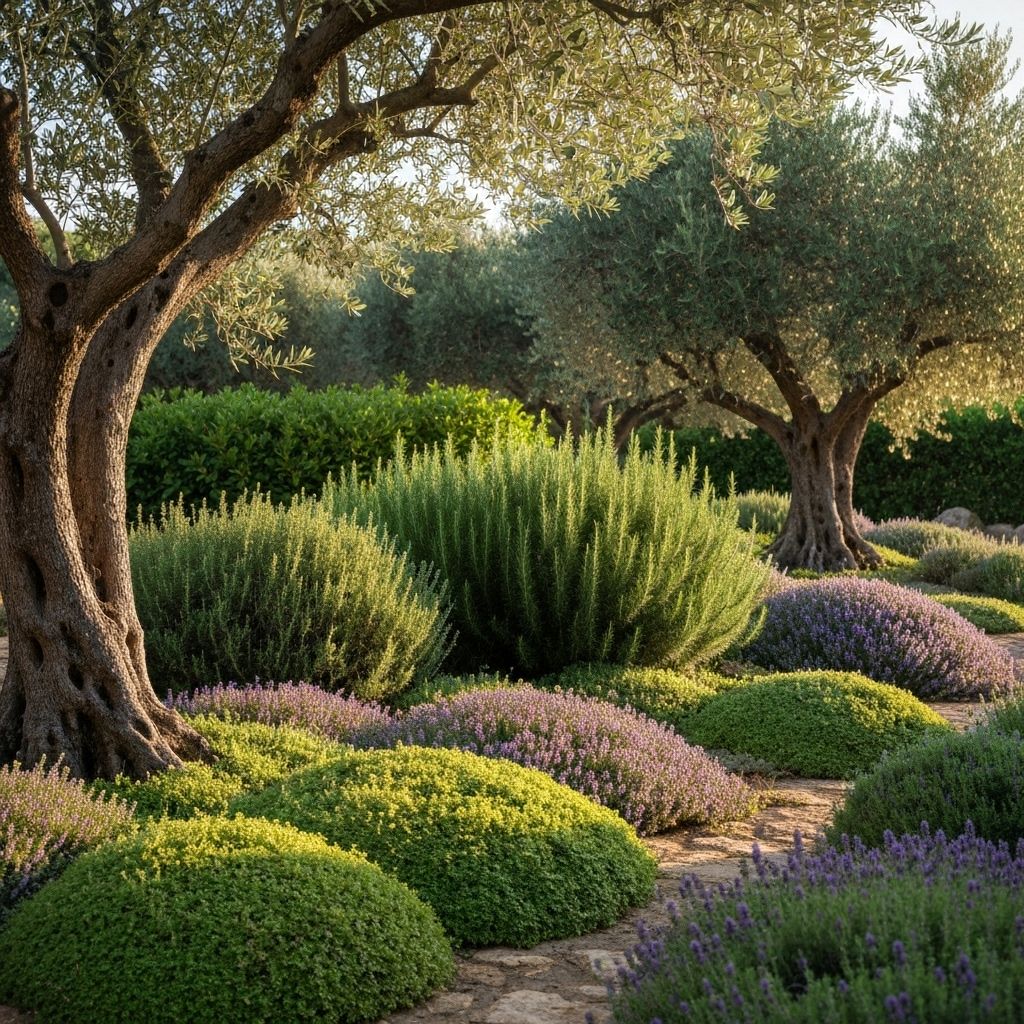
Three-dimensional layering creates depth and interest
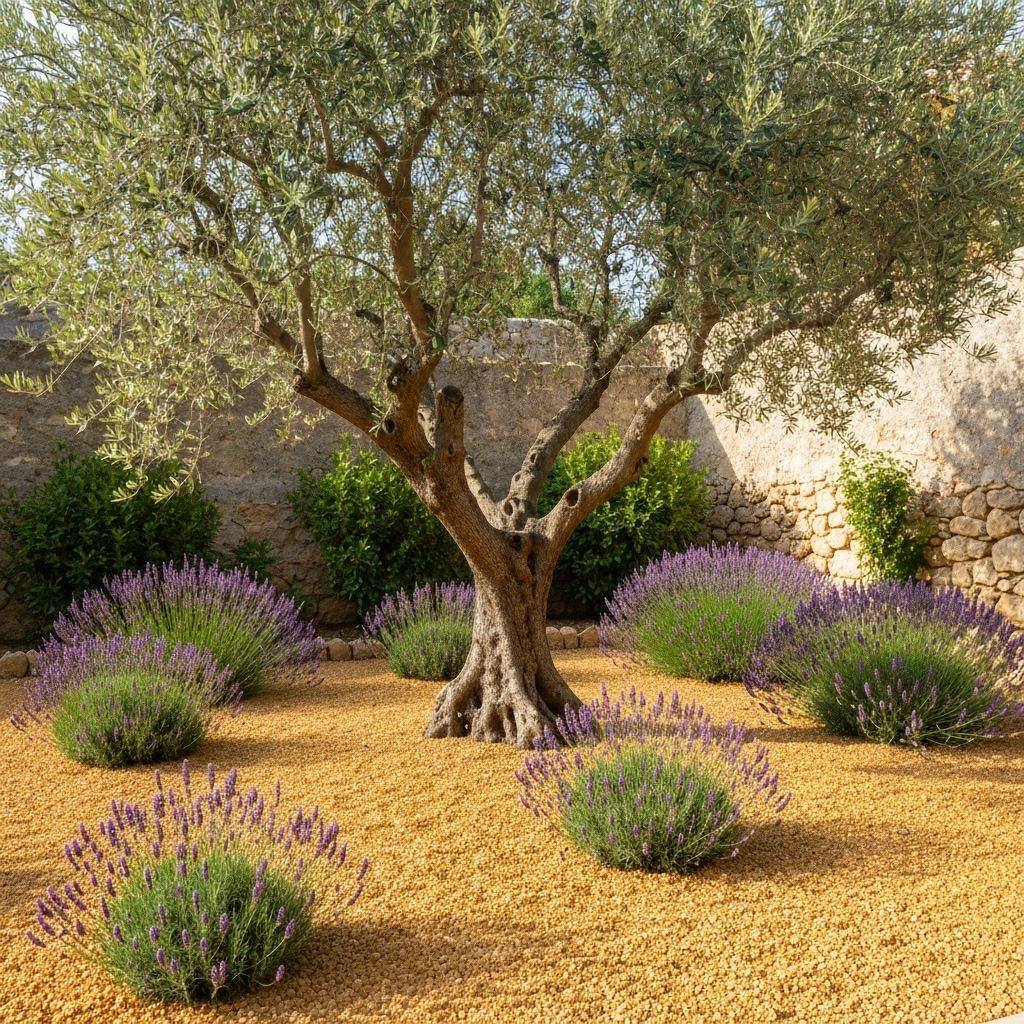
A mature olive tree serves as a stunning focal point
Layer Your Plantings
Create visual depth by thinking in three dimensions: tall trees provide structure and shade, mid-height shrubs form the backbone, and low groundcovers and perennials fill in the gaps. This layering mimics natural plant communities and creates a lush, established look even in a young garden.
Embrace Repetition
Repeat key plants throughout the garden to create rhythm and unity. Plant lavender in drifts of 5-7 plants rather than singles. Use the same rosemary variety as a recurring element. This repetition creates a cohesive design that feels intentional rather than chaotic.
Create Focal Points
Every garden needs moments that draw the eye. A gnarled olive tree, a dramatic agave in a terra cotta pot, or a specimen manzanita with stunning bark can serve as focal points. Place these strategically at the end of pathways, in the center of planting beds, or framing entryways.
Consider Texture and Color
Mediterranean gardens often feature a silvery-green palette punctuated by seasonal color. Mix fine-textured plants (lavender, rosemary) with bold architectural specimens (agave, phormium). Allow the natural silver and gray-green tones to dominate, then add pops of color with flowering perennials.
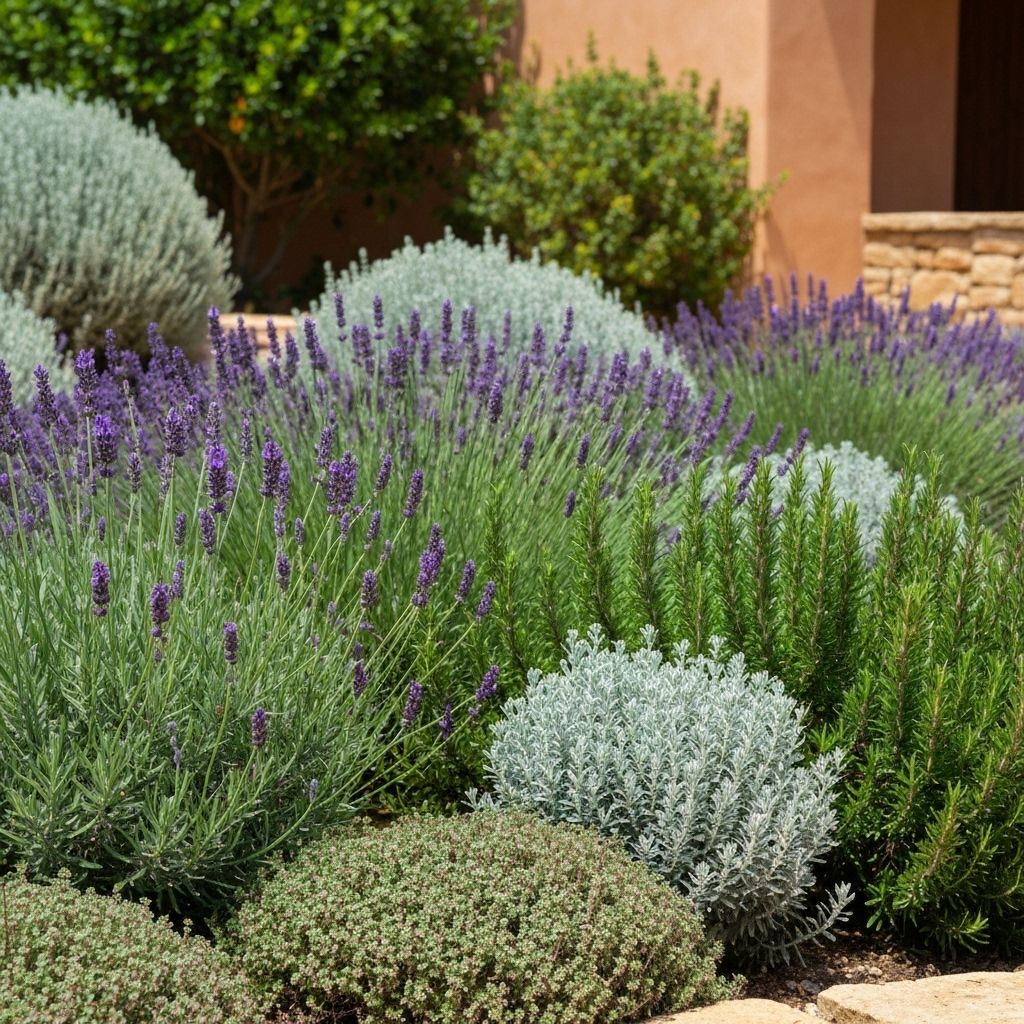
Successful plant combination showing varied heights, textures, and complementary colors
Hardscaping Materials
The hardscape elements you choose set the tone for your Mediterranean garden. Opt for natural, warm materials that complement rather than compete with your plantings.
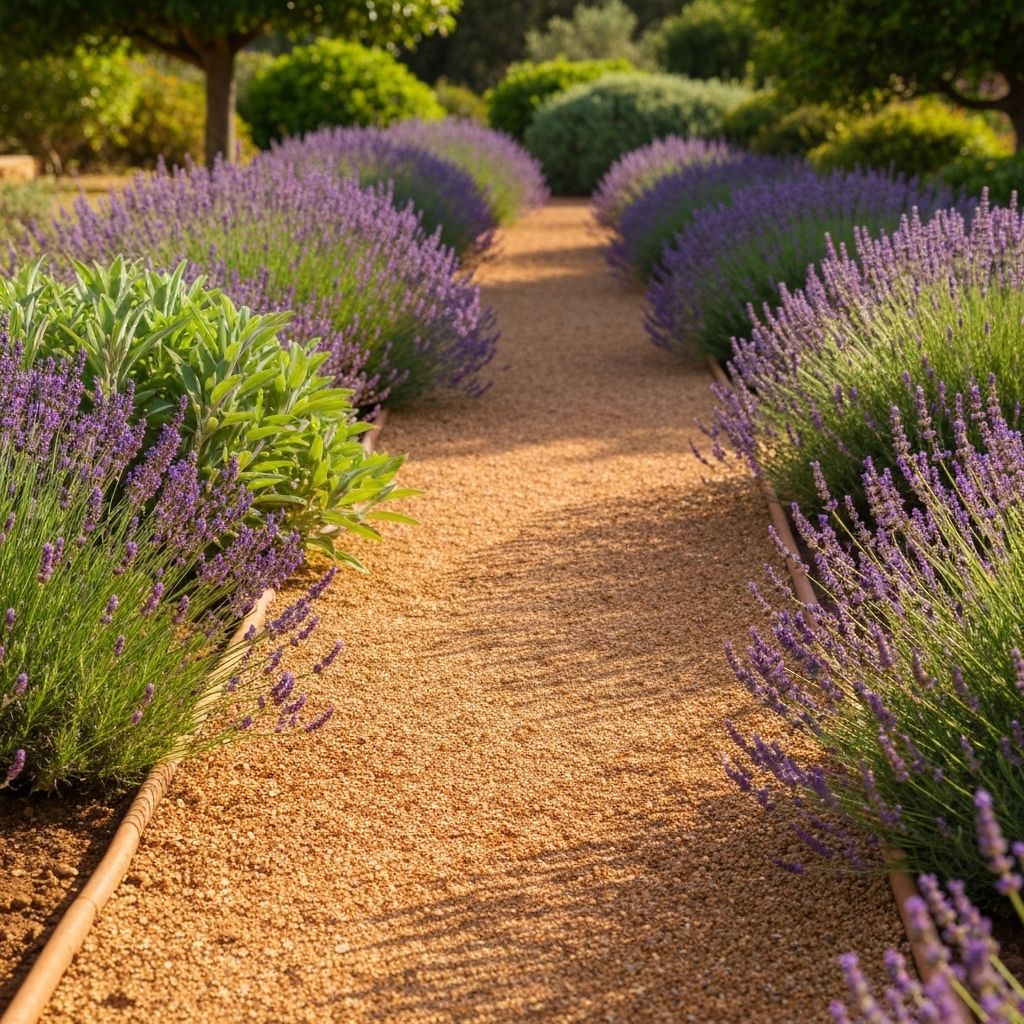
Decomposed granite creates natural, permeable pathways
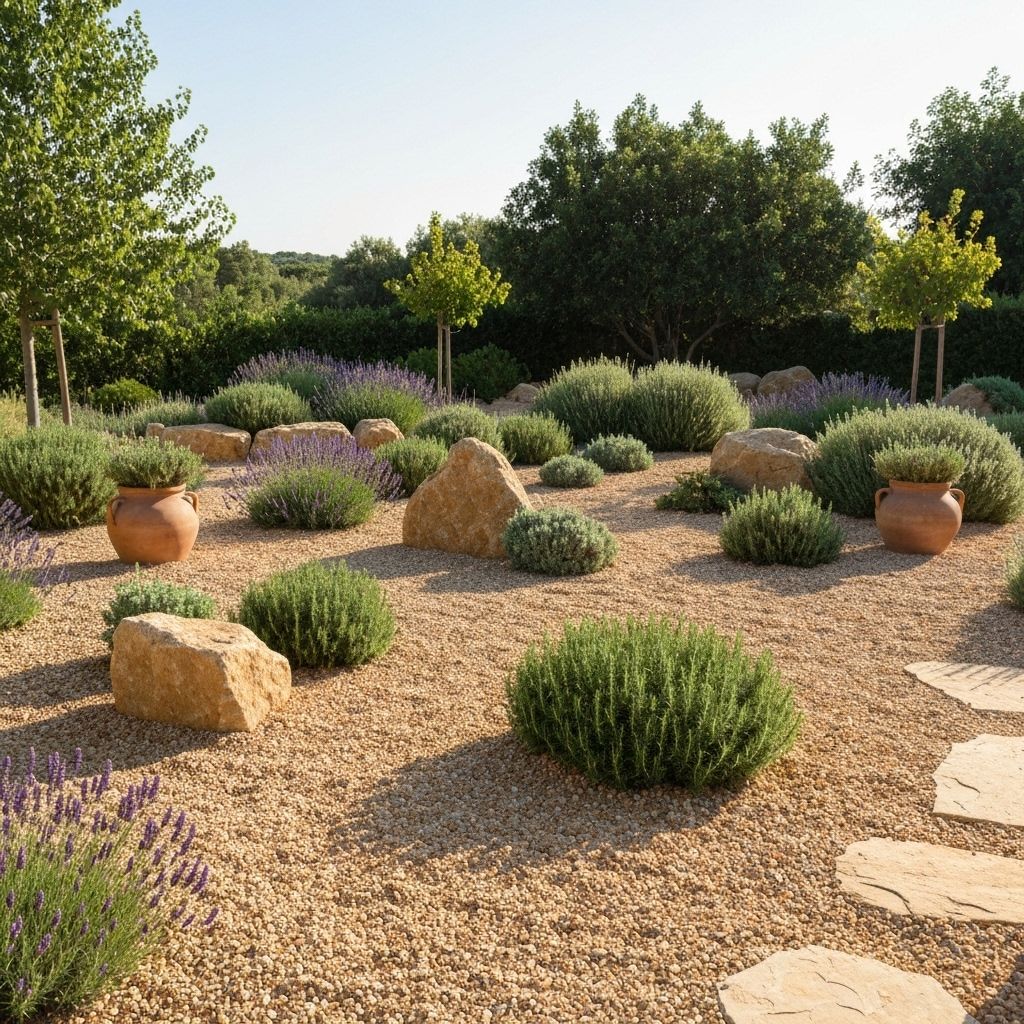
Pea gravel mulch with natural stone accents
Recommended Materials
Decomposed Granite (DG)
The gold standard for Mediterranean pathways. DG is permeable, affordable, and provides a warm, natural surface that complements plantings beautifully. Choose stabilized DG for high-traffic areas.
Gravel and Pea Gravel
Excellent for mulching planting beds. Gravel suppresses weeds, retains soil moisture, and provides excellent drainage. Choose warm tones like tan, gold, or terra cotta.
Natural Stone
Flagstone, limestone, or sandstone create beautiful patios and stepping stones. Look for warm-toned stones that echo the colors in your landscape.
Terra Cotta and Ceramic
Terra cotta pots are quintessentially Mediterranean. Use them for focal point plantings, herbs near the kitchen, or to add vertical interest. Unglazed pots age beautifully.
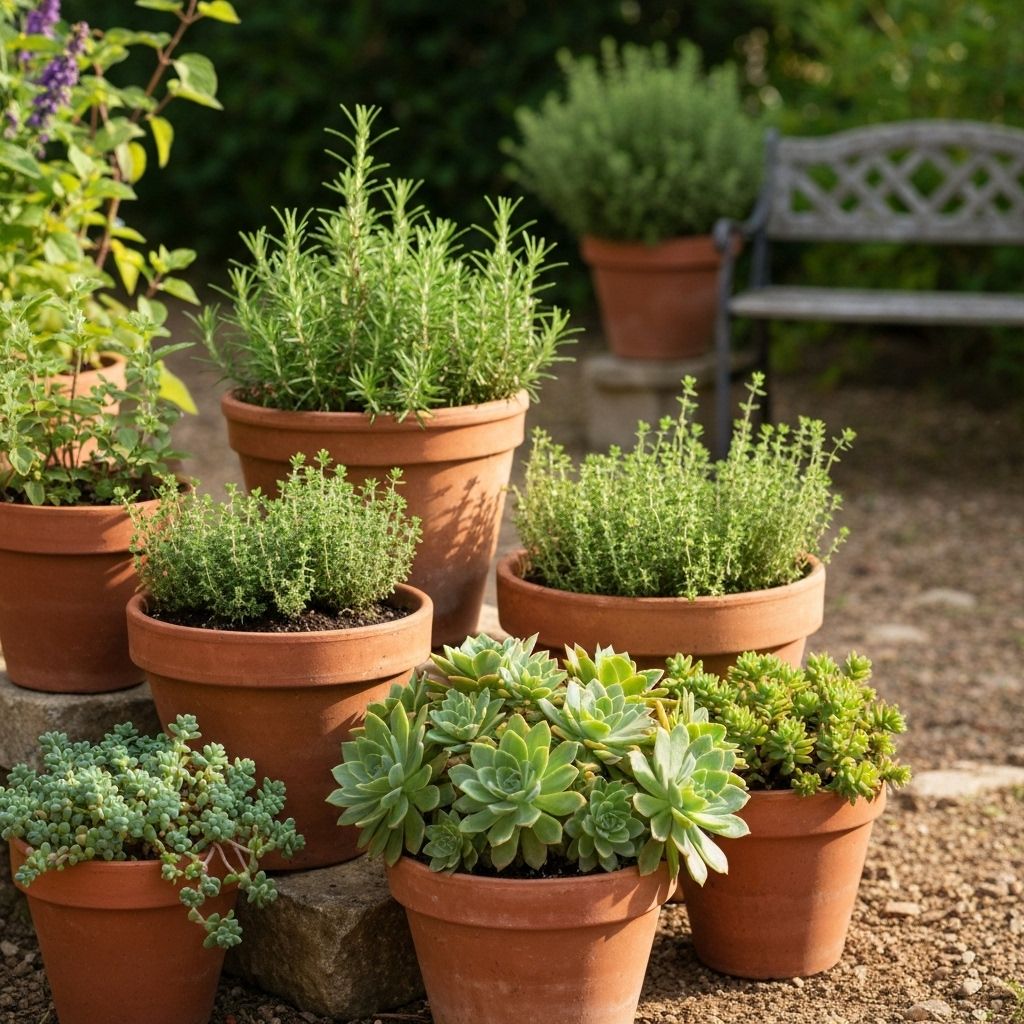
Terra cotta containers add authentic Mediterranean character
Seasonal Interest
A well-designed Mediterranean garden offers beauty throughout the year, with peak interest in spring and a more subdued, silvery aesthetic in summer.
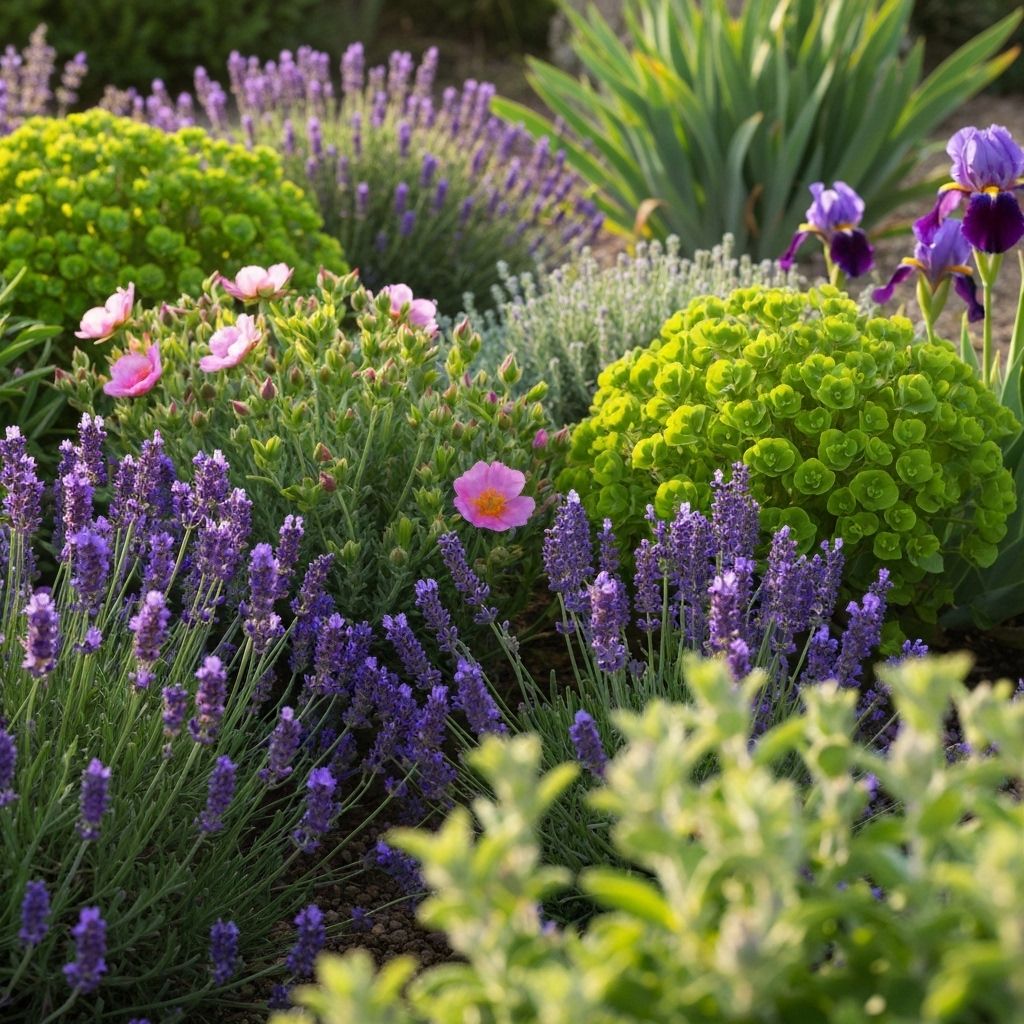
Peak spring bloom with lavender, rock rose, and euphorbia
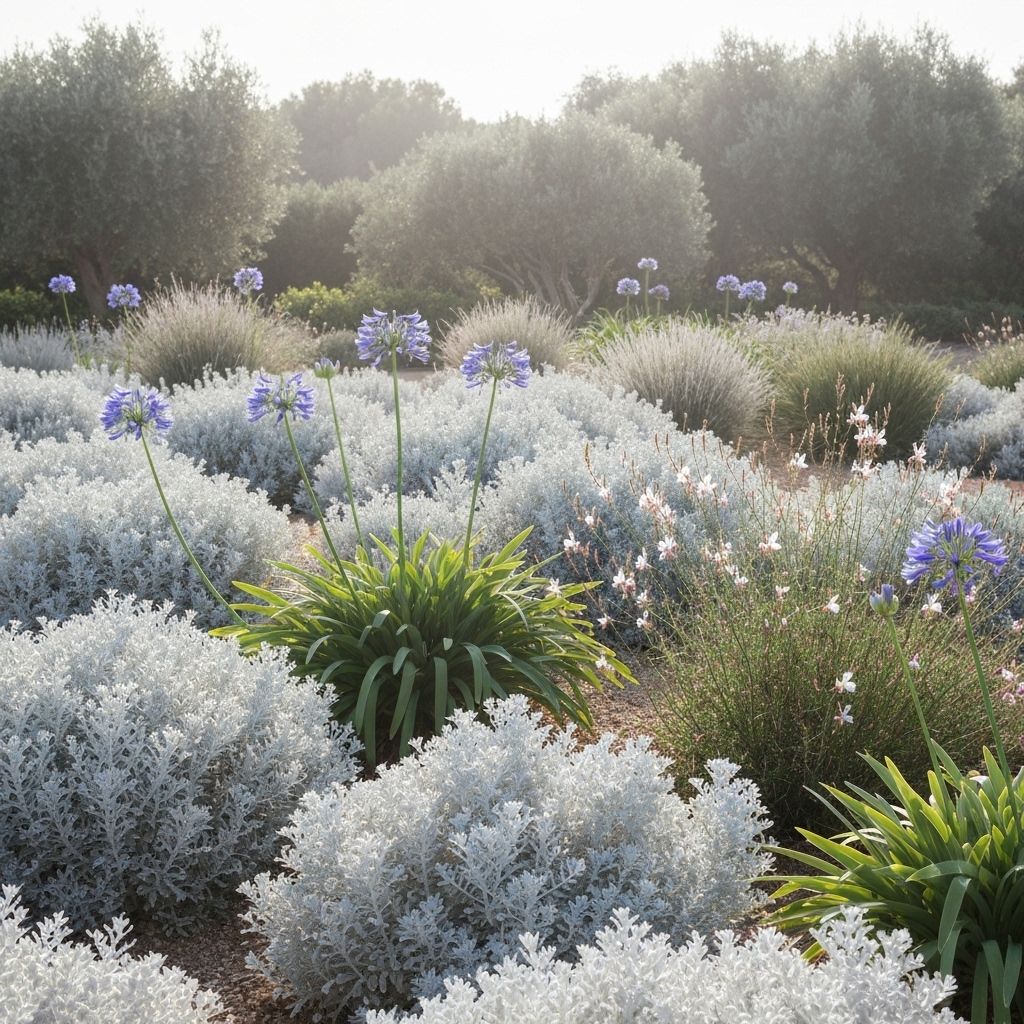
Summer's silvery aesthetic with sun-bleached foliage
Bloom Calendar
Spring (March-May)
Peak bloom season. Cistus, euphorbia, bearded iris, Jerusalem sage, and early lavenders create an explosion of color.
Summer (June-August)
Embrace the silvery, sun-bleached aesthetic. Agapanthus, gaura, and late-blooming salvias provide color. Many plants enter natural dormancy.
Fall (September-November)
A second, smaller bloom period as temperatures cool. Salvias rebloom, and grasses add movement and texture.
Winter (December-February)
Evergreen structure shines. Rosemary blooms, and the garden's bones are revealed. Perfect time for planning and planting.
Water-Wise Irrigation
The key to a successful Mediterranean garden is deep, infrequent watering that encourages plants to develop extensive root systems. Here's how to approach irrigation:
Establishment Phase (Year 1-2)
Water deeply 2-3 times per week during the growing season. Use drip irrigation or soaker hoses to deliver water directly to root zones. Reduce frequency in winter when plants are dormant.
Established Gardens (Year 3+)
Most Mediterranean plants require little to no summer water once established. Water deeply once every 2-4 weeks during the hottest months, or rely entirely on natural rainfall. Some plants (lavender, cistus, rosemary) can go completely dry in summer.
Irrigation Systems
- Drip irrigation is ideal for Mediterranean gardens
- Install separate zones for different water needs
- Use mulch to retain soil moisture and reduce evaporation
- Consider a smart controller that adjusts for weather
- Hand water new plantings until established
Maintenance Tips
Pruning
Prune lavender and other woody herbs after flowering to maintain compact shape. Remove spent flower stalks from agapanthus and other perennials. Thin out dead wood from shrubs in late winter.
Fertilizing
Mediterranean plants thrive in lean soils. Avoid over-fertilizing, which promotes weak, leggy growth. A light application of compost in spring is usually sufficient.
Mulching
Use gravel or pea gravel mulch rather than organic mulches, which can retain too much moisture. Gravel also provides excellent drainage and reflects heat.
Pest Management
Mediterranean plants are generally pest-resistant. Their aromatic oils naturally deter many insects. Encourage beneficial insects and accept minor imperfections.
Getting Started
Your Mediterranean Garden Journey
-
1.
Assess Your Site
Identify sunny, well-drained areas. Mediterranean plants need at least 6 hours of direct sun.
-
2.
Improve Drainage
Amend heavy clay soils with pumice or decomposed granite. Consider raised beds if drainage is poor.
-
3.
Start with Structure
Plant trees first, then shrubs, then perennials and groundcovers. This creates the garden's framework.
-
4.
Plant in Fall
Fall planting allows roots to establish during the rainy season, reducing summer water needs.
-
5.
Be Patient
Mediterranean gardens take 2-3 years to fully establish. The wait is worth it for a lifetime of low-maintenance beauty.
Creating a Mediterranean dry garden in California is one of the most rewarding landscaping choices you can make. Not only will you conserve water and reduce maintenance, but you'll also create a beautiful, resilient landscape that supports local ecosystems and provides year-round interest.
Start small, choose plants suited to your specific microclimate, and embrace the natural beauty of drought-adapted plants. Your Mediterranean garden will reward you with fragrance, color, texture, and the satisfaction of gardening in harmony with California's climate.
